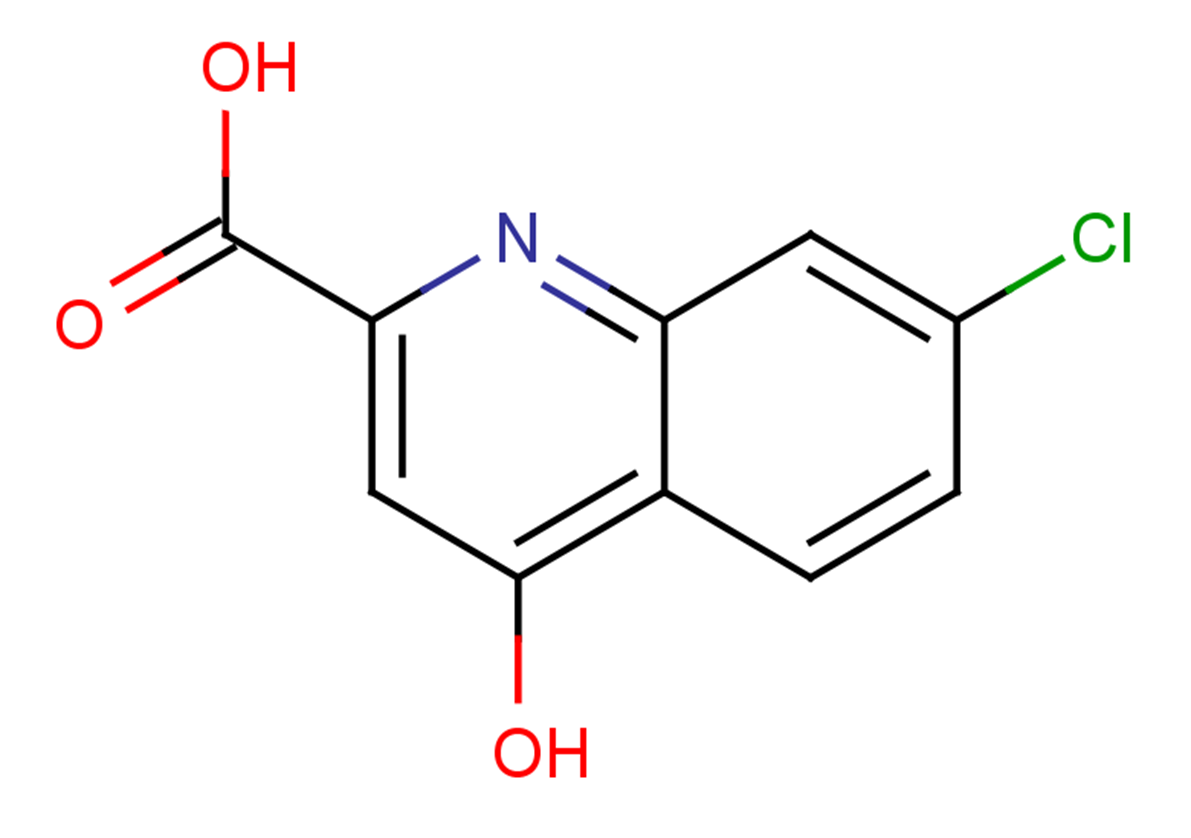7-Chlorokynurenic acid
| Code | Size | Price |
|---|
| TAR-T10191L-5mg | 5mg | £101.00 | |||||||||||||||||||||||||||||||||||||||||||||||||||||||||||||||||||||||||||||||||||||||||||||||||
| Special offer! Add £1 to your order to get a TargetMol CCK-8 Kit. Read more here. | |||||||||||||||||||||||||||||||||||||||||||||||||||||||||||||||||||||||||||||||||||||||||||||||||||
Quantity:
| TAR-T10191L-10mg | 10mg | £119.00 | |||||||||||||||||||||||||||||||||||||||||||||||||||||||||||||||||||||||||||||||||||||||||||||||||
| Special offer! Add £1 to your order to get a TargetMol CCK-8 Kit. Read more here. | |||||||||||||||||||||||||||||||||||||||||||||||||||||||||||||||||||||||||||||||||||||||||||||||||||
Quantity:
| TAR-T10191L-1mL | 1 mL * 10 mM (in DMSO) | £124.00 | |||||||||||||||||||||||||||||||||||||||||||||||||||||||||||||||||||||||||||||||||||||||||||||||||
| Special offer! Add £1 to your order to get a TargetMol CCK-8 Kit. Read more here. | |||||||||||||||||||||||||||||||||||||||||||||||||||||||||||||||||||||||||||||||||||||||||||||||||||
Quantity:
| TAR-T10191L-25mg | 25mg | £173.00 | |||||||||||||||||||||||||||||||||||||||||||||||||||||||||||||||||||||||||||||||||||||||||||||||||
| Special offer! Add £1 to your order to get a TargetMol CCK-8 Kit. Read more here. | |||||||||||||||||||||||||||||||||||||||||||||||||||||||||||||||||||||||||||||||||||||||||||||||||||
Quantity:
| TAR-T10191L-50mg | 50mg | £267.00 | |||||||||||||||||||||||||||||||||||||||||||||||||||||||||||||||||||||||||||||||||||||||||||||||||
| Special offer! Add £1 to your order to get a TargetMol CCK-8 Kit. Read more here. | |||||||||||||||||||||||||||||||||||||||||||||||||||||||||||||||||||||||||||||||||||||||||||||||||||
Quantity:
| TAR-T10191L-100mg | 100mg | £450.00 | |||||||||||||||||||||||||||||||||||||||||||||||||||||||||||||||||||||||||||||||||||||||||||||||||
| Special offer! Add £1 to your order to get a TargetMol CCK-8 Kit. Read more here. | |||||||||||||||||||||||||||||||||||||||||||||||||||||||||||||||||||||||||||||||||||||||||||||||||||
Quantity:
| TAR-T10191L-500mg | 500mg | £863.00 | |||||||||||||||||||||||||||||||||||||||||||||||||||||||||||||||||||||||||||||||||||||||||||||||||
| Special offer! Add £1 to your order to get a TargetMol CCK-8 Kit. Read more here. | |||||||||||||||||||||||||||||||||||||||||||||||||||||||||||||||||||||||||||||||||||||||||||||||||||
Quantity:
Prices exclude any Taxes / VAT
Overview
Regulatory Status: RUO
Shipping:
cool pack
Storage:
-20℃
Images
Documents
Further Information
Bioactivity:
7-Chlorokynurenic acid is an effecitve and selective antagonist of NMDA receptor with IC50 of 0.56 μM for the glycine B coagonist site. 7-Chlorokynurenic acid inhibits the reuptake of glutamate into synaptic vesicles with a Ki of 0.59 μM and shows antinociceptive actions after neuraxial delivery.
CAS:
18000-24-3
Formula:
C10H6ClNO3
Molecular Weight:
223.61
Pathway:
Neuroscience
Purity:
0.9972
SMILES:
O=C(O)C=1N=C2C=C(Cl)C=CC2=C(O)C1
Target:
GluR; NMDAR
References
1. Kemp JA, et al. 7-Chlorokynurenic acid is a selective antagonist at the glycine modulatory site of the N-methyl-D-aspartate receptor complex. Proc Natl Acad Sci U S A. 1988 Sep;85(17):6547-50.
2. Yaksh TL, et al. Characterization of the Effects of L-4-Chlorokynurenine on Nociception in Rodents. J Pain. 2017 Oct;18(10):1184-1196.
3. Croucher MJ, et al. 7-Chlorokynurenic acid, a strychnine-insensitive glycine receptor antagonist, inhibits limbic seizurekindling. Neurosci Lett. 1990 Oct 2;118(1):29-32.



